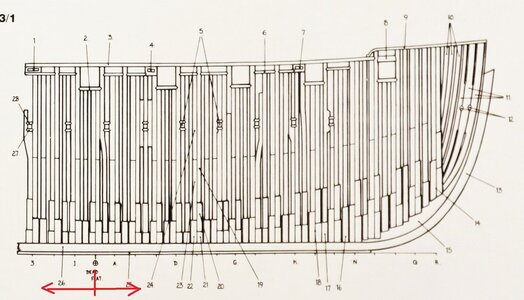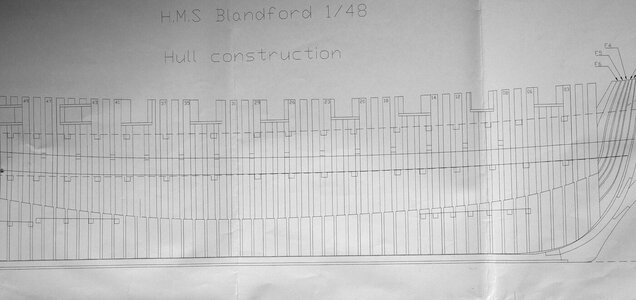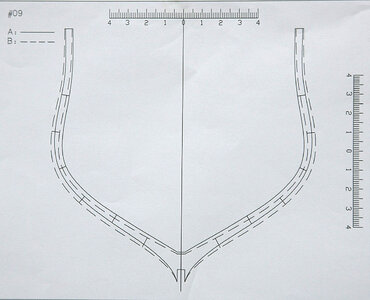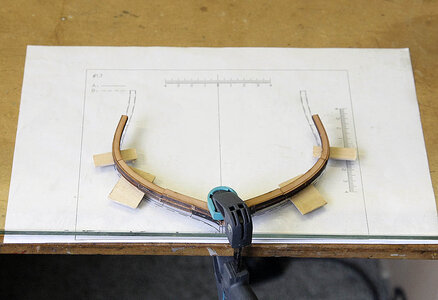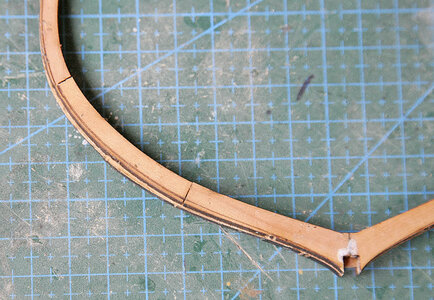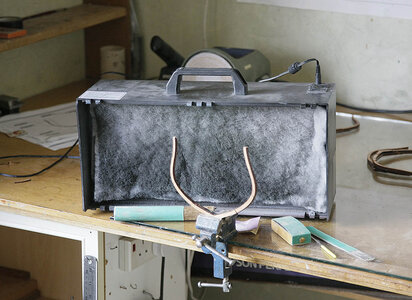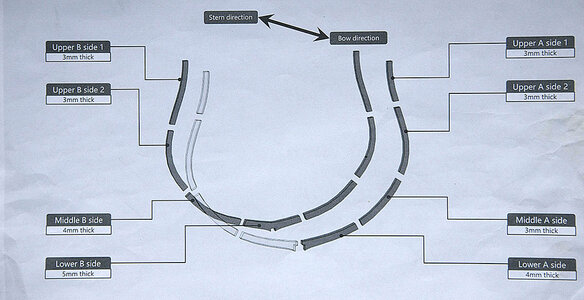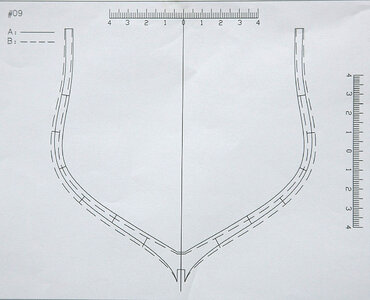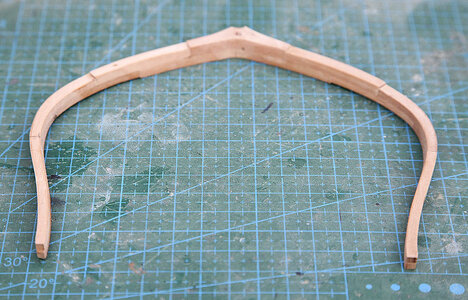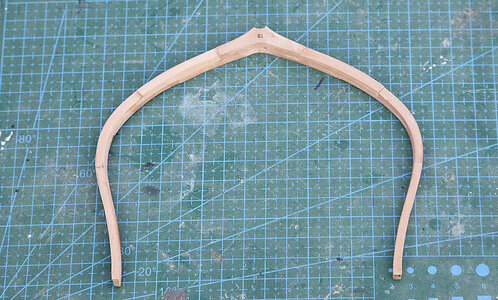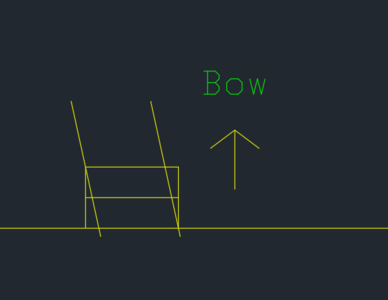Hallo Ken - looking very good - also the rubber bands which are bringing really some colour into our boring brown hulls
Small remark:
I do not know, if the framing of the kit is prepared with the change of the frame direction - if yes please take care that the direction of the frames is somehwere midships changing - not that you fair the frame(s) towards the wrong direction - so please check this with teh drawings and instruction of the kit
View attachment 395914
This is an excerpt from the Blandford anatomy book, where I marked this mentioned point - yes, the framing of the model is different and simplified compared to Goodwins drawing, but some kits have this






